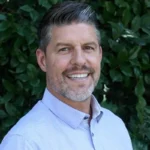Lexapro (escitalopram) is an antidepressant in the selective serotonin reuptake inhibitor (SSRI) class. Nearly 8 million people in the US are prescribed Lexapro, making it one of the most common antidepressants.
Although generally considered safe and often used as a first-line treatment for depression and anxiety, 15% to 27% of people who stop taking Lexapro experience withdrawal symptoms. These symptoms usually begin 1 to 3 days after stopping, and can last for weeks or months [1].
Read on to understand how Lexapro works on the brain and the importance of tapering off the drug under medical supervision rather than quitting cold turkey.
What is Lexapro and How Does It Work?
Lexapro is an SSRI commonly prescribed to treat major depressive disorder and generalized anxiety disorder. It increases levels of the neurotransmitter serotonin in the brain to help regulate mood, appetite, sleep, and emotional stress response.
It is often used before other antidepressants as it tends to have fewer side effects or interactions with other drugs. Lexapro and other SSRIS work on the brain by [2]:
- Blocking the serotonin transporter (SERT) prevents the reuptake of serotonin into neurons, which increases serotonin levels in the synaptic cleft.
- This increase in serotonin availability helps regulate mood, sleep, and can help reduce anxiety over time.
- Long-term use of lexapro leads to changes in the presynaptic 5-HT1A receptors and increased expression of the brain-derived neurotrophic factor (BDNF) ,which supports neuroplasticity and resilience to stress.
Why Do People Stop Lexapro?
People stop taking Lexapro for a range of reasons, most commonly related to side effects, effectiveness, and fears of dependency.
Side Effects
Around 60% to 85% of Lexapro users report experiencing side effects, although the length and severity of these often differ depending on the dosage. In clinical trials, Lexapro side effects are most common in the first two weeks of treatment and dissipate over time [1].
Lower doses of Lexapro (10 mg) are associated with less intense side effects than higher doses (20 mg). Common side effects of antidepressants and Lexapro users include [3]:
- Headache (up 24%)
- Nasuea (18% to 20%)
- Fatigue or Excessive Drowsiness (4% to 13%)
- Insomnia (7% to 12%)
- Dry Mouth (9% to 10%)
Other common side effects reported include dizziness and sexual dysfunction, such as decreased libido and erectile dysfunction. Some users may quit because their anxiety or depressive symptoms return, never go away, or are made worse (e.g., suicidal thoughts).
Perceived Ineffectiveness
Around 20% to 40% of patients stop taking Lexapro due to perceived ineffectiveness, usually because they do not give the medication enough time to work. Studies show that a majority of patients stop antidepressants within the first 3 months, often before the full therapeutic effects are felt. These cases of early discontinuation reflect one of the major challenges of SSRI medication [4].
Fear of Dependency
Although Lexapro does not carry a risk of addiction, many still try to avoid prolonged use out of fear of becoming reliant on a medication. This can be due to the stigma of being on antidepressants or negative past experiences with mental health medication.
Lexapro Withdrawal Timeline and How to Wean Off Lexapro
The lexapro withdrawal timeline typically begins 1 to 5 days after stopping or reducing the medication, with symptoms peaking around days 5 to 10. Tapering off Lexapro with your healthcare professional is recommended to minimize symptoms and help the brain adjust to lower serotonin levels.
The timeline is different for each patient, but a Lexapro withdrawal timeline and tapering schedule for a 20 mg daily dose typically looks like this:
- Weeks 1-2: 10 mg/day
- Weeks 3-4: 5mg/day
- Weeks 5-6: 2.g mg/day
- Weeks 7-8: 1.25 mg/day
- Weeks 9-10: 0.6 mg/day
- Week 11: Stop medication
Dangers of Stopping Lexapro Cold Turkey
A significant percentage of users experience escitalopram withdrawal symptoms when stopping the drug, which is known as discontinuation syndrome, and can range from mild to severe.
Quitting lexapro can lead to uncomfortable and intense symptoms, with 38% of users reporting they are unable to stop without medical help [5]. Common symptoms of SSRI detox include:
- Dizziness
- Nausea
- Brain Zaps (electric shock sensations in the head)
- Mood swings
- Flu-like symptoms
Why Choose Northbound Treatment Services in CA?
For more than 30 years, Northbound Treatment Services in California has been at the forefront of providing lifesaving, compassionate residential care and specialized services to help people from all walks of life feel better, discover themselves, and live free from addiction.
We have facilities located throughout California to help guide you on your recovery journey. Reach out to our admissions team now.
Sources
[1] Campos, A. et al. (2023). Discontinuation of antidepressant treatment: a retrospective cohort study on more than 20,000 participants. Annals of general psychiatry, 22(1), 49.
[2] Mena, S. et al. 2024. Modulation of serotonin transporter expression by escitalopram. Journal of Communications Biology.
[3] Escitalopram. GoodRX.
[4] Hernandez, G. et al. (2023). Reasons for Discontinuation or Change of Selective Serotonin Reuptake Inhibitors in Online Drug Reviews. JAMA Network Open, 6(7), e2323746.
Author
-

President, CEO & Founder at Northbound Treatment Network
Paul Alexander is the CEO, President & Founder of Northbound Treatment Network in Newport Beach, California. He believes wholeheartedly in transformational leadership, organizational health and effective, fully integrated substance use disorder and mental health treatment. With over 27 years of experience in behavioral healthcare, Paul has extensive knowledge of “in vivo” treatment modalities, clinical development, operations, strategy, marketing and financial planning. He has been widely recognized for his development of collegiate-based residential treatment programs for students in recovery and authored a research study at The University of California confirming this modality’s effectiveness.
Paul’s comprehensive professional experience, willingness to innovate, and emphasis on organizational health are vital factors in Northbound’s continued success. Paul received his Certified Addiction Treatment Specialist training at Saddleback College in Mission Viejo, CA, and was awarded Outstanding Alumni Service Award in 2002. Paul holds a Bachelor of Arts degree in Criminology, Law and Society, Summa Cum Laude, from University of California, Irvine, and a Juris Doctorate degree from Loyola Law School of Los Angeles. Paul currently serves on The National Association of Addiction Treatment Providers (NAATP) board. In addition, he serves on The Family Recovery Foundation board and The CarePossible board in Orange County; both organizations are committed to raising funds for family recovery and treatment for former military personnel. Paul is in recovery himself and lives in Orange County with his wife Silvana and his two young sons, Noah and Dean.







